IGCSE Economics
Understanding why wages differ between jobs using supply and demand analysis
Mar 15th

Image: Some rights reserved by 401K
Three websites to help you understand how wages differ using supply and demand diagram analysis.
Why the distribution of income in the UK is unequal by economicshelp.org
Wage differentials between occupations by tutor2u.net
A bit more advanced:
Banks
Mar 15th
Might be useful for the IGCSE Economics course: an introduction to banking system, and an explanation of Central Banks (although this is quite high level stuff).
Stock Exchange
Feb 28th
In the IGCSE Syllabus for Economics we have the following:
describe the functions of central banks, stock exchanges, commercial banks;
This post addresses the second of those financial institutions listed, stock exchanges.
First, this entertaining video produced in 1952 for a US audience does a good job of explaining how a stock exchange works:
This video from the mid 1990s shows how the New York Stock Exchange had moved on from the 1950s – what do you think are the main differences?
Then, if you have time, see how interconnected the world’s stock exchange markets are today when crisis hit in 2008 as a major investment bank in Wall Street was suddenly taken off the world finance market as it filed for bankruptcy (find out what that phrase means). Two news clips introduce the events …
A major crisis like this had happened before. For the historian in you, this documentary clip summarises the 1929 Wall Street Stock Market Crash …

Differences in Earnings between different Occupational Groups
Jan 26th
Here are some resources to help you with this aspect of the IGCSE Economics syllabus:

Source: Capital Gains Tax Rate & Income Inequality Chart
Via http://www.fastcodesign.com
Changes in Earnings Over Time For An Individual
Jan 21st
Tasks:
1) You should also create a hand-drawn chart to show how , in theory, a person’s earnings might change over the course of their lifetime. This should be saved as a digital version (you might draw it using online tool such as dabbleboard, or you might draw it by hand on a tablet, or you might draw it on paper and scan / photograph it).
2) Your task is to write the script for a audio report describing and explaining (giving likely reasons for) how earnings are likely to change over the course of a person’s lifetime, and you should refer to your image. You should aim for a report that lasts approximately 2 minutes maximum.
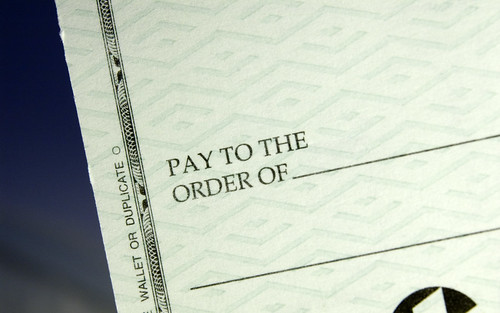
Image: Some rights reserved by dslrninja
Resources:
These resources should help you to visualise things. Some are quite complex – it is up to you to simplify the information while keeping some of their main information ‘in tact’.
Average Lifetime Earnings Trajectories by Education – by Political Calculations. Click on the image in the blog article.
Peak Earnings by Mother Jones
US Average Income per Income Earner by Age Group for 1995 and 2005 – via Political Calculations
Distribution of US Individual Income by Age, 1995 via Political Calculations
Education and raises by Marginal Revolution
This following ‘infographic’ actually tackles how ‘discretionary income’ changes – you should read what this actually means as it is different from earnings, but still worth exploring.
How Does Discretionary Income Change Over A Lifetime?
Money – Its Characteristics and Functions
Jan 15th
Your task is to answer these questions:
- What is barter?
- Where does barter still occur?
- What are three problems with barter?
- What are the four main functions of money?
- What are the necessary characteristics of money? You should find at least five, but there are more. Give examples to explain each characteristic.
Here is mjmfoodie on the topic but you only really need to watch from 48 seconds in until 3 minutes and six seconds in.
This video was created over 60 years ago, but is still a good introduction to the topic:
This is a well put together animation to show the problems with a barter system:
This video is also useful, but be careful, it mixes the characteristics up with the functions of money:
Think you’re getting the hang of it? Check this light-hearted approach to the topic:
Enquiry–Market Failure and Possible Solutions in Real Life Issues
Jan 8th
This activity is designed to address the following syllabus point from the Cambridge IGCSE Syllabus (0455) for Economics:
define private and social costs1 and benefits and discuss conflicts of interest in relation to these costs
and benefits in the short term and long term through studies of the following issues:
• conserving resources versus using resources;
• public expenditure versus private expenditure.1 Social costs are equal to the sum of private costs and external costs.
It is suggested that these enquiries are conducted in groups.
Research and prepare a presentation or written summary on one of the following issues for the your country which you are studying in. Suggestions on what to include on your presentation / summary are at the bottom of this post.
Type A – Public versus Private Provision of Key ‘Services’
Transport – should there be more public or private transport in your chosen country?

Image: Some rights reserved by Jeff Attaway
The Provision of Health Care – should there be more public or private provision?

Image: Some rights reserved by Fotos Gov/Ba
The Provision of Education – should there be more public or private provision?

Image: Some rights reserved by Artshooter
Type B – Use of versus Conservation of Key ‘Resources’
Using Wood from Forests as a Raw Material
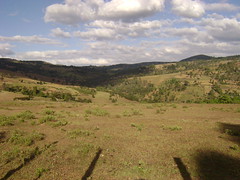
Image: Some rights reserved by afromusing
Using Rivers to Generate Hydro Electricity
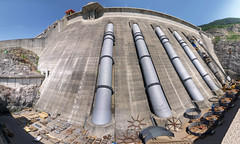
Image: Some rights reserved by Kam’s World
The Use of Fossil Fuel Power Stations
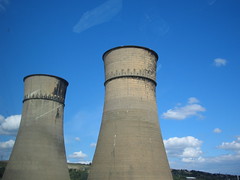
Image: Some rights reserved by Tim Ebbs
The Use of ‘Beauty Spots’ (such as beaches) for Tourism
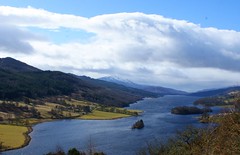
Image: Some rights reserved by sarniebill1
Suggestions of what you could include in your presentation / summary:
1) What are the private costs and benefits involved?
2) What are the external costs and benefits involved?
3) If Type A Issue – Government versus Private. How has the government been involved? How has the private sector been involved? Should this change and, if so, why?
If Type B Issue – Conservation versus Usage. What are the resources used for, how much are they used, are they conserved? Should they be used more or conserved more?
4) What conflicts of interests are there in this issue? What different groups are involved and how are they affected differently? Why might they have different views on using these resources / providing these services?
5) Discuss how this issue might differ between the short term and the long term. For example, what are the short term effects of using these resources / providing this service? What are the long term effects? Are there short term solutions and are there long term solutions?
Bonus points awarded for:
- Use of and accurate definitions of relevant key words/phrases.
- Real life evidence – statistics, places, dates, etc.
- Diagrams with explanations.
Suggested format:
Either
a) A slideshow that you can explain briefly to the rest of your class.
b) An email to someone, such as your teacher, but imagining that they are an influential person in the government and that you are writing to advise them on this issue as an Economic advisor.

Quizzes and an IGCSE Past Paper Question to Assess Your Understanding of Demand, Supply and Market Equilibrium
Nov 11th

Image: Some rights reserved by Valerie Everett
a) Exploring Supply and Demand by Kim Sosin – useful in that you can get feedback on the impacts on the Supply and Demand graph, shown on the right hand side of your browser.
b) True/False Quiz hosted on a http://www.oup.com site.
c) SELF-GRADING PRACTICE QUIZ #3 via http://www.sscnet.ucla.edu
The following four quizzes by Pearson via http://wps.aw.com are good means of testing your understanding of demand, supply,and the market equilibrium. Usefully, at the end of each quiz you can email your results to yourself and your teacher.
d) Quiz 1
e) Quiz 2
f) Quiz 3
g) Quiz 4
Source: CIE Economics Paper 4 Exam, May/June Session 2002

Should Eggs Be Sold At Their Pre-Flood Prices During the Flood Crisis?
Nov 3rd
In 2011, Thailand suffered one of its most destructive floods in history. This link will hopefully update with some accuracy to give this post some context in the future (at the time of writing, the floods are still very much underway): 2011 Thailand Floods on Wikipedia
Due to a combination of reduced supply (as many farms, factories, and transport links in the country were flooded) and an increase in demand (as people stocked up on essentials in case they would not be able to get any later on as the floods worsened), prices of many goods increased considerably.
Some news items and social media
On October 30th, this report from The Nation newspaper online emerged (click on the image to see the original article):
The day before, on the 29th October, the following tweet appeared reporting that the Commerce Minister apparently said consumers should not accept higher (“inflated”) prices for eggs:
Typically eggs, before the floods, would sell at 3 or 4 baht each, so the new price represented an approximate doubling.
On 31st October, the Commerce Ministry announced Price Controls on 9 Essential Goods – although eggs weren’t specifically included in the 9 Essentials, a representative from the ministry said “about 3.2 million eggs from Malaysia will reach Thailand on November 3. It would be sold at no more than Bt4 each”.
On the same day, 31st October, this report emerged (click on the image to see the original article). [Note, to “sell like hot cakes” means to sell very quickly and in large numbers].
In the scenario above, why did they sell like hot cakes? Why did huge queues form? Why did the government have to ration eggs after maintaining a ‘ceiling’ (maximum) price of 3 Thai baht?
On 1st November, this tweet appeared on the topic:
Now we are introduced to the word ‘shortage’ – in Economics that has a specific meaning – what does a shortage mean?
Some graphs
Let’s for simplicity argue that the price of eggs had risen because of a severe reduction in supply (although it is possible that the demand for eggs increased as well, it seems likely that supply would have reduced by more than any increase in demand). Follow the steps on the graphs below:
So the question you should try and answer, as a student of Economics, is in the title …
Should Eggs Have Been Sold At Their Pre-Flood Prices?
- Use diagram(s), fully labelled and explained.
- Refer to the developments in the news and items social media references given above.
- To conclude, try to explain the possible advantages of sticking with pre-flood prices and the possible disadvantages (you might have to think from a mixture of social, political and economic perspectives).
Here are some suggested resources to help you for the economics- side of things:
mjmfoodie on Market Equilibrium
Reffonomics gives interactive diagrams on Shortages and Surpluses.
mjmfoodie on Price Floors and Price Ceilings
A bit more advanced, Biz/Ed on Putting Demand and Supply Together: The Market Mechanism. The interactive diagrams could be used to explore the changes.

Supply Revisited
Oct 25th
This post is to add further resources on the concept of supply, for those who wish to follow up on this absolutely essential concept in Economics. First, however, I recommend you use the resources on this post to learn about supply: http://opengecko.com/economics/supply/
1) Videos
Supply by vaacon1
Creating a supply curve from a supply schedule by FreeEconHelp
Supply Curve and Changes in Supply by jcsballoon
Change in supply / change in quantity supplied by vaacon1
Various factors (short clips) affecting supply by vaacon1:
The diagrams are quite hard to see on the whiteboard, but the explanations and examples are clear.
Supply shifts – Prices of Relevant Resources
Supply Shifts – Expectations of Future price
Supply Shifts – Number of Sellers
Supply Shifts – Technology
Supply shifts – Taxes and Subsidies
You will need to revise what taxes and subsidies are.
Supply shifts – Government Restrictions
2) Interactive Activities
Factors affecting supply (via http://www.mbs.edu)
Supply via http://yknot.terapad.com
Supply – sellers perspective via http://edunirvana.com
Graphing The Supply Curve via http://glencoe.com
The Law of Supply and Supply Curves via http://www.emcp.com























